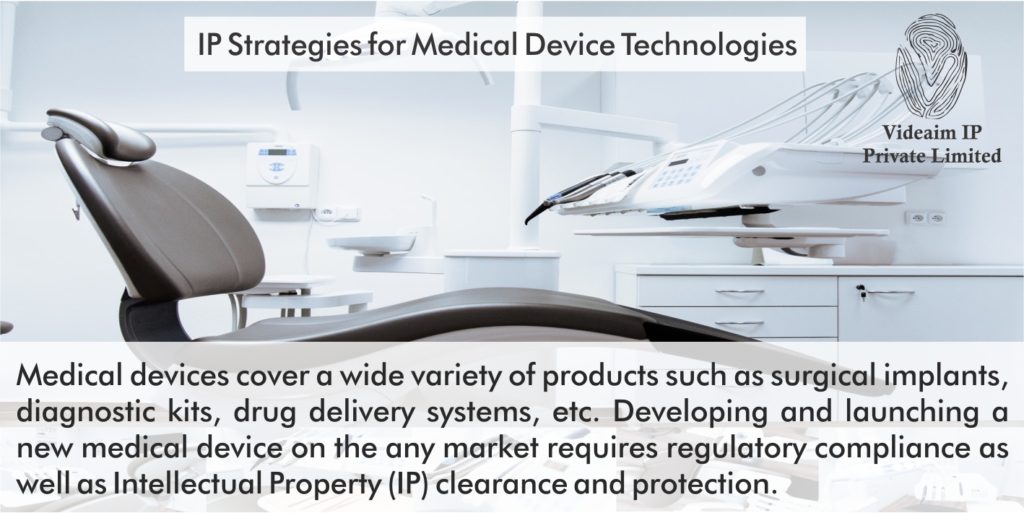
Medical Devices cover a wide variety of products like surgical implants, diagnostic kits, drug delivery systems, etc. which can be protected and monopolized via various Intellectual Property Rights, as and when they are created at various stages of development.
Medical device development and introduction in any market requires strong requires strict regulatory compliance and Intellectual Property (IP) clearance and protection.
Medical device development requires simultaneous protection and development of IPR (intellectual property rights) to understand and account for the various legal challenges that may arise during protection and commercialization of inventions.
The key legal factors accounted for during developments include outlining competition, performing prior art and freedom to operate to avoid litigation in future. Analyzing IP matters at each stage of life-cycle for a medical device is crucial and important to maintain a strategic edge.
Identifying Intellectual Property in Medical Devices at various stages of Development
An exemplary life-cycle for a medical device comprises essentially of following stages:
- Concept Stage
- Prototype Stage
- Pre-clinical & clinical Stage
- Manufacturing Stage
- Marketing Stage
A lot of Intellectual Property (IP) assets are generated in all the stages and it is important to identify and protect these assets under various IPR (intellectual property rights) for implementing strong anti-counterfeiting measures .
At concept stage, it is important that those involved in the project understand that they should maintain confidentiality to protect the concept, technical details and any design drawings or other documents generated thereto, which may reveal the shape, configuration and operation of the medical device. Sensitization of IP is important to understand the need of secrecy by all the project members and inventors. Provisional patent for the concepts should be filed.
At prototype stage, it is important to protect any prototypes that are generated and strict confidentiality should be maintained. If a third party is involved to assist in the development of the prototypes, strict measures such as executing non-disclosure agreements (NDAs) should be followed.
At Pre- clinical & clinical stage, patentability of medical device should be checked out. More importantly, one needs to check whether anyone else owns valid patents which their new product might infringe. In case any similar prior arts are identified design around via white space analysis should be undertaken. Again, it is desirable to have a distinctive brand name for the medical device which enables consumers/health care professionals to identify the origin of your product. Distinctive brand names (and logos) are protected under trademarks.
At manufacturing stage, we suggest to protect copyright content associated with medical device. Artwork and text on packaging as trade dress, instructions leaflets and advertising is likely to be protected bycopyright.
At marketing stage, it is right time to have undergo product and IP valuation of the medical device. A good valuation helps an inventor to commercialize their inventions as an investor is always warded off via frivolous claims.
We at Videaim provide global services related to Intellectual Property (IP) in patents, designs, trademarks, and copyrights. We undertake projects for product designing and development of a fully functional proto-type. We also perform valuation of a technology and product.
For more information, Please feel free to contact us or Email your queries atinfo@videaimip.com and videaimip@gmail.com
